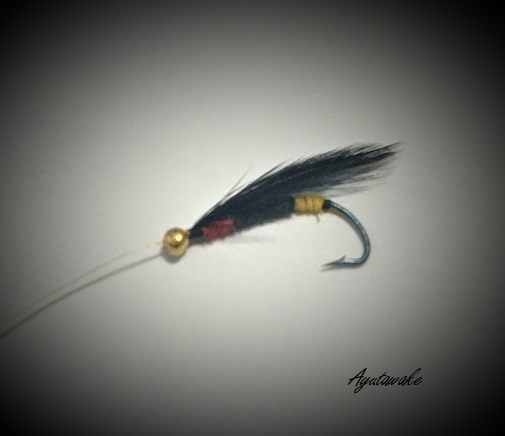Well, guys. Thanks for the replies. I should be at least 100 miles north on I 77 by now, instead of still home goofing off. I’m going to see my brother in Ohio for a few days, maybe a few cousins. Probably no internet connection till next week. My brother wouldn’t know and wouldn’t care which end of a computer is the front and which the back. I will be not far from Anthony. (Belmont, Ohio). Thus a rushed reply.
Fuji-san writes in his lecture document, the emphasis is on the movement of the jun kebari. (on page 6)
「順毛鉤 」( 写真 )
動き」に重きをおいて考え出したのがこの毛鉤である。
Fuji Sensei 2007 Tenkara Lecture PDF
Anthony, yes the picture in the book matches what I recall in the video. The videos I am referring to are Modern Tenkara and Modern Tenkara Part 2. [ 現代テンカラ & 現代テンカラ パ-ト2].
https://10colorstenkara.com/t/modern-tenkara-book-and-videos-by-fuji-hiromichi/61
As for the digital translation of 順毛鉤. In my experience how it is digitally translated often changes depending on the punctuation of the sentence or the other words in the sentence or sentence structure. Often it will translate as Order fly, But also most of the time if you click on the translation and alternate translation is Forward Fly.
Each of these will probably translate differently.
「順毛鉤 」。順毛鉤 。順毛鉤釣り方法。順毛鉤巻く、順毛鉤巻く。
In my opinion google translate used to work much better than it does now.
I noticed it started become real screwy a couple of years ago. An internet search found stories reporting that Google was “improving” their digital translation by using AI, artificial intelligence. Well, imo, it was not an intelligent move. AI is thus far fake intelligence. We have nothing to fear yet from AI. It’s not yet Skynet. No worries for most of us anyway, [I was looking at some stuff from the 2017 RSNA in Chicago in November. There was a big emphasis on AI and the warning that Doctors won’t yet be replaced by AI, but doctors who use AI will replace doctors who do not. Yikes]
Lastly, about the さかさま毛鉤, Sakasama Kebari. I don’t think it is a widely used type of kebari nor a widely used name. I suspect it is a name invented by the author of the webpage.
See ya next week.

